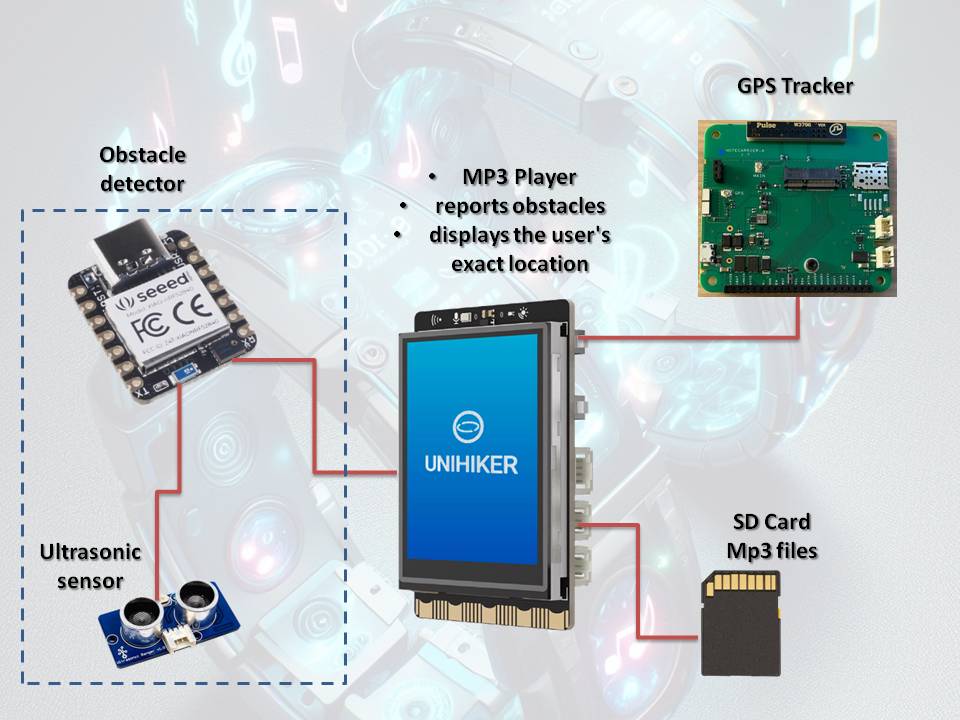This project seeks to give you the possibility of managing a simple MP3 player and receiving additional information on GPS localization, to know your position in real time, receive an acoustic alarm in the presence of physical obstacles such as steps or objects left on the ground. The idea of carrying out this project was born from the desire to create something that could be useful for those who have vision problems.
The project is composed of three distinct parts:
UNIHIKER, a real small computer with Linux operating system and the ability to work in Python natively using Jupiter Notebook.
This is the heart of the project and will manage the data from the other hardware components. Given its small size, I will hypothesize that this board is worn by the blind user like a watch. This board will be our MP3 player and will also manage the information coming from the other boards. In particular, it will receive data relating to GPS position and temperature through JSON queries on the WEB page of the Blues board. The MQTT server already configured by default on the board will also be active and will collect the data coming from the third board.
- Blues Notecarrier-A, a splendid board that I received in a different version from the one visible on the WEB site, in particular, the part relating to the management of external LiPo batteries is missing but, in the rear part, it has a battery holder for 3 AA batteries 1.5V. Together with this board I received two Notecards, one with WiFi connectivity and one with cellular connectivity and GPS. It is a truly remarkable board, after a simple configuration phase, well documented on the site https://dev.blues.io/example-apps/,
full of interesting examples, just power it with a power bank or using the 3 batteries provided, to receive the data in real time from the Notehub site.
- Seeed Studio XIAO ESP32S3 Sense, a board that use a dual-core ESP32S3 chip, supporting both Wi-Fi and BLE wireless connectivities, and which allows battery charge. It integrates built-in camera sensor, digital microphone, 8MB PSRAM, 8MB FLASH, and external SD card slot. It's a board optimized for AI but we, also due to lack of time, will use it in the traditional way to detect the presence of obstacles along the path using an ultrasonic sensor. Obviously using the camera and AI would be the best choice for detecting obstacles but it would require a training and testing phase that is too long for my needs.
In this project I will use the Blues Notecarrier to know the user's location, while the XIAO ESP32S3 Sense will detect the presence of near obstacles using an ultrasonic sensor. These data will be sent to the HUNIHIKER that is used as a mp3 player and that is also used to notify the user of the presence of obstacles.
Work in progress.....
ConclusionObviously this work is just a draft of what I had promised myself to do. This event was very interesting and full of ideas. The information on the Discod channels and on Hackster were always very useful.
I chose to use only three of the proposed technologies but I studied and used all the products I received.
I think I learned a lot from this study but I did not have the time to complete what I had proposed.
Today I will publish what I have done so far but I will continue to work on the project and on the fantastic boards that I have received from the sponsors. I hope to be able to create many applications and publish them soon on Hackster.com.



























_3u05Tpwasz.png?auto=compress%2Cformat&w=40&h=40&fit=fillmax&bg=fff&dpr=2)


Comments
Please log in or sign up to comment.